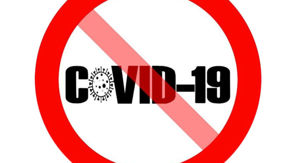(Photo: The Good Brigade/Getty Images)
My son Grayson was about two and a half years old when his preschool teacher called me. A child development specialist had visited his classroom and had some concerns about his development.
As a speech-language pathologist, I had been carefully monitoring my twins’ development since they were born, so I was surprised to receive the call. Even so, I was terrified that I had missed some critical issue in his development. I wondered: What if the specialist misdiagnosed my child? I couldn’t decide which scenario was worse: if I had missed something myself, or if my child was about to be misidentified. As those thoughts raced through my head, I asked to have the specialist call me immediately. I listened as she described Grayson’s typically developing motor and social/emotional abilities. Then she described his speech as mostly not intelligible.
The specialist was telling me she thought my son had a developmental delay in his speech and language.
My experience is not unique. Every day in the U.S., some parent will field this sort of unsettling phone call about their child.
As a speech-language pathologist, I understand the duty to connect with parents to share professional concerns. As a parent, I understand how scary and confusing these calls can be. My son was two and a half! How many children that age engage in intelligible conversations with a stranger? Fortunately for all of us there are some benchmarks we can use to help us understand typical speech and language development and where our children’s skills fall.
Hearing: In the U.S. and other industrialized nations, audiologists test hospital-delivered newborns before the babies go home. While the child is sleeping, the audiologist places a small probe (sort of like an earbud) in the baby’s ear. The probe sends a signal into the ear. That signal causes organs in the ear to vibrate and send the signal back to the device. This hearing test is safe, short and causes no discomfort to a sleeping newborn. If they fail, a second test is completed with the audiologist sometime later. If additional testing reveals a hearing difficulty the child will receive early interventions. These can include family training, baby hearing aids or perhaps a cochlear implant. Parent counseling is also a part of this process. Speech and hearing professionals will work with the family to ensure the child never misses out on early language development because of a hearing difficulty.
Listening: Between birth and 18 months, children listen to the sounds of the language(s) spoken around them and learn the rules to combine those sounds to make words. They learn where to add stress or pauses, or to get louder in case you weren’t listening. There are universal linguistic rules, including the general order of speech sound acquisition, word acquisition and sentence development that are relatively consistent across languages. If an infant does not respond to environmental sounds or the voice of the caregiver, or a 4–10-month-old baby does not coo, babble and make many different sounds, or a 12-month-old is not attempting to say words “mama, dada, bubu, uh-oh,” you should consider a hearing evaluation.
What’s interesting is that children in multilingual households (even children with developmental disorders) don’t mix up the rules for different languages. For example a child learning both Mandarin (a tone-based language where rises and falls in pitch change word meaning) and English (which has different rules to change word meaning) doesn’t apply the English rules to Mandarin. So the final pitch rise typically produced to indicate an English question—“Can I go?”—won’t be used to distinguish questions from statements in Mandarin.
Telling: Children learning multiple languages may demonstrate a longer learning period (they have more to learn) than monolingual language-learners. However, the quality and quantity of language output for typically developing mono- and multilingual children should be roughly equivalent. Parents who grew up in households where multiple languages were spoken may be familiar with this construct. If, however you are new to this experience you may find your multilingual child spends more time using one language over the other; or speaks to one caregiver exclusively in one language; or responds in English to questions posed in another language. All these behaviors are typical. Parents of mono- and multilingual children should reach out for help if their child (a) doesn’t respond in the expected manner in any language; (b) has trouble following simple instructions; or (c) does not name, tell, comment, request using from one to four words by the age of three.
Children learn to talk through practice, even if we sometimes don’t understand it. Based on what parents report to researchers, strangers typically understand about 25 percent of the words spoken by a one-year-old. For typically developing children speech intelligibility increases at a rate of around 25 percent each year so by age four most children should be understood by most people nearly 100 percent of the time. At two and a half, a child would be roughly 50 percent understandable to unfamiliar listeners.
Understanding: At two and a half, a child can understand between 100 to 500 words, but may only use 50 to 150 words. The child will arrange those words to communicate many ideas such as “all gone,” “dada go night-night” and other routine phrases. Over time and with practice the toddler’s receptive (listening) and expressive (telling) vocabulary increases exponentially. By age three vocabulary may grow to 1,000 words, and by age five the young pre-reader may have a vocabulary of around 10,000 words. Child speech and language development are roughly the same regardless of languages used, family income or family structure.
In our case Grayson’s speech was just below the developmental target for his age. As the specialist observed, he said lots of words; she just didn’t understand most of them. She made the responsible decision to call us and share her concerns. Although we were quite surprised, we listened to her concerns and discussed them as a family. We chose not to pursue early intervention. Instead, we continued to read and talk to Grayson and his twin every day. By age three, both twins were well above the developmental milestones expected for their age.
Our choice not to pursue therapy was based on several factors. As a speech pathologist, I had the training to provide support at home. As a result of frequent chronic ear infections, Grayson had ear tubes placed at 18 months. His ear infections could have negatively affected his language development, but still Grayson was not three months behind the milestones. Without this knowledge and the intervention we could provide at home, we would have accepted the referral.
In thinking about a child’s speech and language development, parents need to remember that hearing is foundational for both. Children develop language only by interacting with other people. For more information, the CDC provides a helpful checklist to assist parents in deciding when to ask their pediatrician for a speech and language referral. In general, if children are three months behind in one or more areas, a request for referral, to a speech language pathologist or child development specialist, is probably a good idea. Talk to your pediatrician. As parents we all want to provide the greatest opportunity for our children’s success. Creating a language-rich environment by talking with, reading with and listening to your child is one of the best ways to do that.











